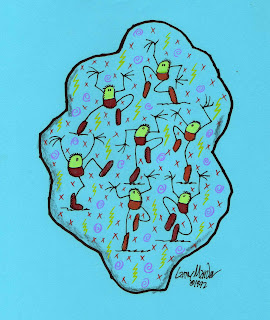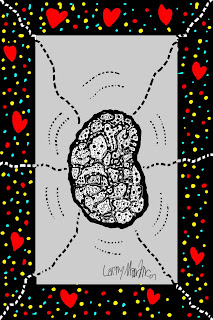
The first time I remember seeing an autoharp was the one John Sebastian, of the Lovin’ Spoonful played on “Do You Believe in Magic?” when they were on something like the Ed Sullivan Show (To me, at the time, Sebastian’s autoharp looked as alien as the dopey accordion player in Gary Lewis and the Playboys.) Later on in art school, I had a friend who played autoharp and I got to monkey around a little with it but I never really appreciated its potential as an instrument.
After all, the autoharp is bit of a peculiar instrument.
 For one thing, although it sort of looks like one, it isn’t a harp at all. It belongs to the zither family. The delightful, haunting music that accompanies the opening credits of the British film noir, The Third Man, is an excellent example of what the zither sounded like in traditional European folk music.
For one thing, although it sort of looks like one, it isn’t a harp at all. It belongs to the zither family. The delightful, haunting music that accompanies the opening credits of the British film noir, The Third Man, is an excellent example of what the zither sounded like in traditional European folk music.Now, the autoharp is in fact a chorded zither. Its origin seems to be clouded in fuzzy memory and patent litigation, but one thing is for sure, it became a very popular rhythm instrument in the folk music of the American south in the early part of the 20th century.
As I’ve mentioned before, I’ve been listening a lot lately to the Carter Family. My appreciation for Mother Maybelle Carter as one of the most innovative guitar pickers of all time has been growing in leaps and bounds. Maybelle’s cousin and sister-in-law, Sara Carter, sang lead melody on most of their songs and strummed an autoharp as a rhythmic accompaniment to Maybelle’s scratchy-thumping lead on her guitar. A.P. Carter, Sara’s husband, joined in with the bass vocals when they sang three part harmony.
After the trio broke up, Maybelle continued performing with her daughters, The Carter Sister—June, Anita, and Helen. They were regular performers on the Grand Ole Opry.
This video showcases Mother Maybelle, in 1961, playing “Liberty Dance” on autoharp with Flatt and Scruggs on the Grand Ole Opry/Pet Milk Show.
It is an excellent example of how the autohard, in the hands of an accomplished musician, can easily carry the lead parts in a rollicking song.
I find this music intoxicatingly hypnotic.
(It even ends with a proverbial “Shave and a haircut—two bits” riff!)
Thought I’d share.





 Above are two drawings that will be accompanying me looking for good homes .
Above are two drawings that will be accompanying me looking for good homes . 

 I never thought I'd be
I never thought I'd be  The links fill you in about the event and the cascading information flow of conflicting ideas and information regarding what is going on in the area near
The links fill you in about the event and the cascading information flow of conflicting ideas and information regarding what is going on in the area near 








 I know most of you are thinking "Well...duhhhhhh." But one of the downsides of the last 15 years has been working with very talented artists who are so skilled in these programs that in order to accomplish commercial work--I never had to do anything for myself at all.
I know most of you are thinking "Well...duhhhhhh." But one of the downsides of the last 15 years has been working with very talented artists who are so skilled in these programs that in order to accomplish commercial work--I never had to do anything for myself at all.





 BEANISH and PROFESSOR GARBANZO outside the FIX-IT SHOP.
BEANISH and PROFESSOR GARBANZO outside the FIX-IT SHOP.







